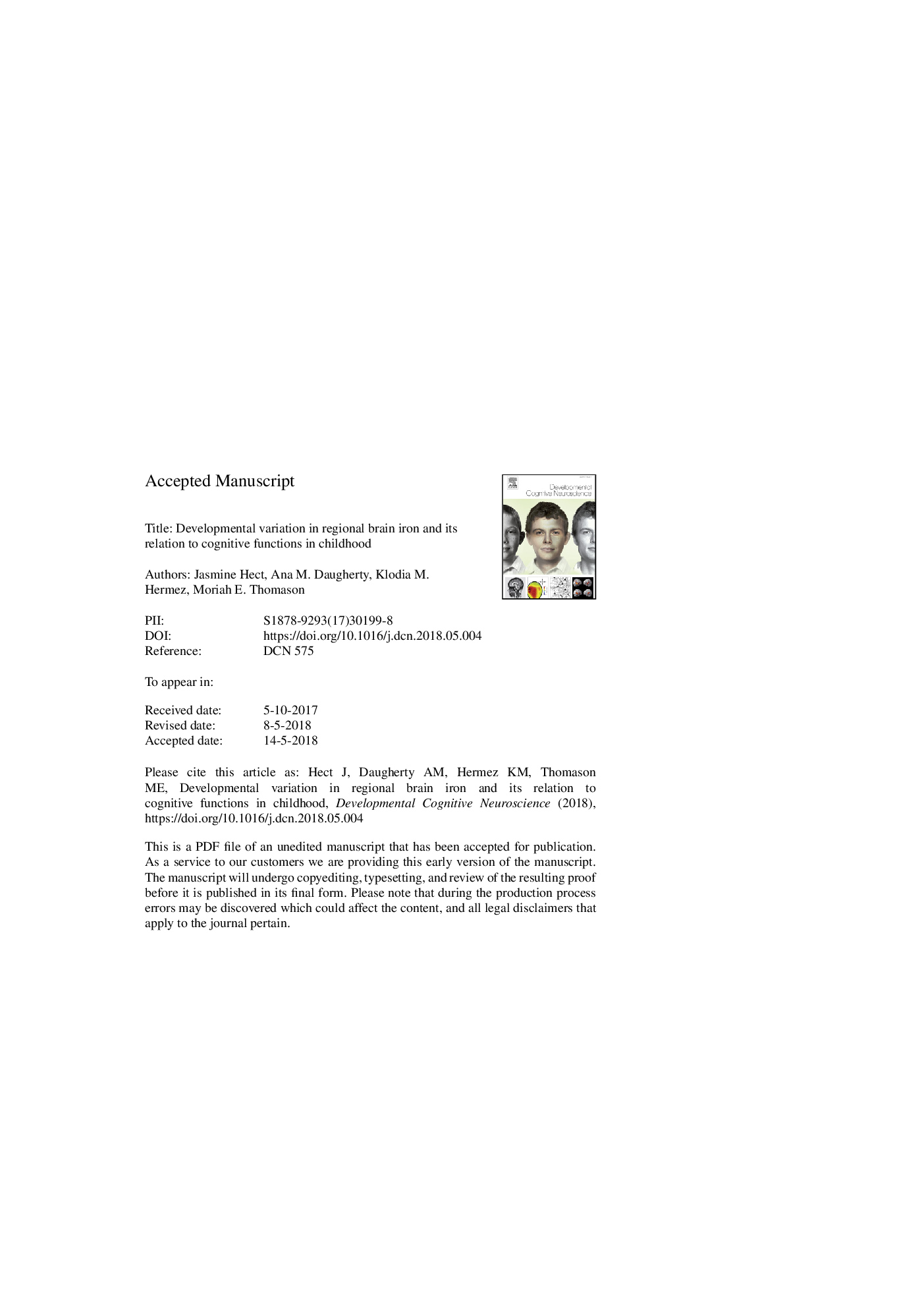| کد مقاله | کد نشریه | سال انتشار | مقاله انگلیسی | نسخه تمام متن |
|---|---|---|---|---|
| 8838199 | 1613090 | 2018 | 26 صفحه PDF | دانلود رایگان |
عنوان انگلیسی مقاله ISI
Developmental variation in regional brain iron and its relation to cognitive functions in childhood
ترجمه فارسی عنوان
تنوع رشد در آهن مغز منطقه ای و ارتباط آن با توابع شناختی در دوران کودکی
دانلود مقاله + سفارش ترجمه
دانلود مقاله ISI انگلیسی
رایگان برای ایرانیان
موضوعات مرتبط
علوم زیستی و بیوفناوری
علم عصب شناسی
علوم اعصاب رفتاری
چکیده انگلیسی
Non-heme iron is a vital metabolic cofactor for many core processes of brain development including myelination, dendritogenesis, and neurotransmitter synthesis, and accumulates in the brain with age. However, little is known about development-related differences in brain iron and its association with emerging cognitive abilities during formative years. In this study, we estimated brain iron via R2* relaxometry in children ages 7-16 (Nâ¯=â¯57; 38 females) and examined its relation to age-related differences in cognitive ability. As we hypothesized, age correlated positively with iron content in the hippocampus and across subregions of the basal ganglia. The magnitude of age differences in iron content differed between regions such that the largest effects were observed in basal ganglia subregions: globus pallidus, substantia nigra, caudate nucleus, and putamen, as compared to values obtained for the hippocampus and red nucleus. We did not observe sex or hemispheric differences in iron content. Notably, greater brain iron content was associated with both faster processing speed and higher general intelligence, and shared 21.4% of the age-related improvement in processing speed and 12.5% of the improvement in general intelligence. These results suggest that non-heme iron plays a central neurobiological role in the development of critical cognitive abilities during childhood.
ناشر
Database: Elsevier - ScienceDirect (ساینس دایرکت)
Journal: Developmental Cognitive Neuroscience - Volume 34, November 2018, Pages 18-26
Journal: Developmental Cognitive Neuroscience - Volume 34, November 2018, Pages 18-26
نویسندگان
Jasmine L. Hect, Ana M. Daugherty, Klodia M. Hermez, Moriah E. Thomason,
